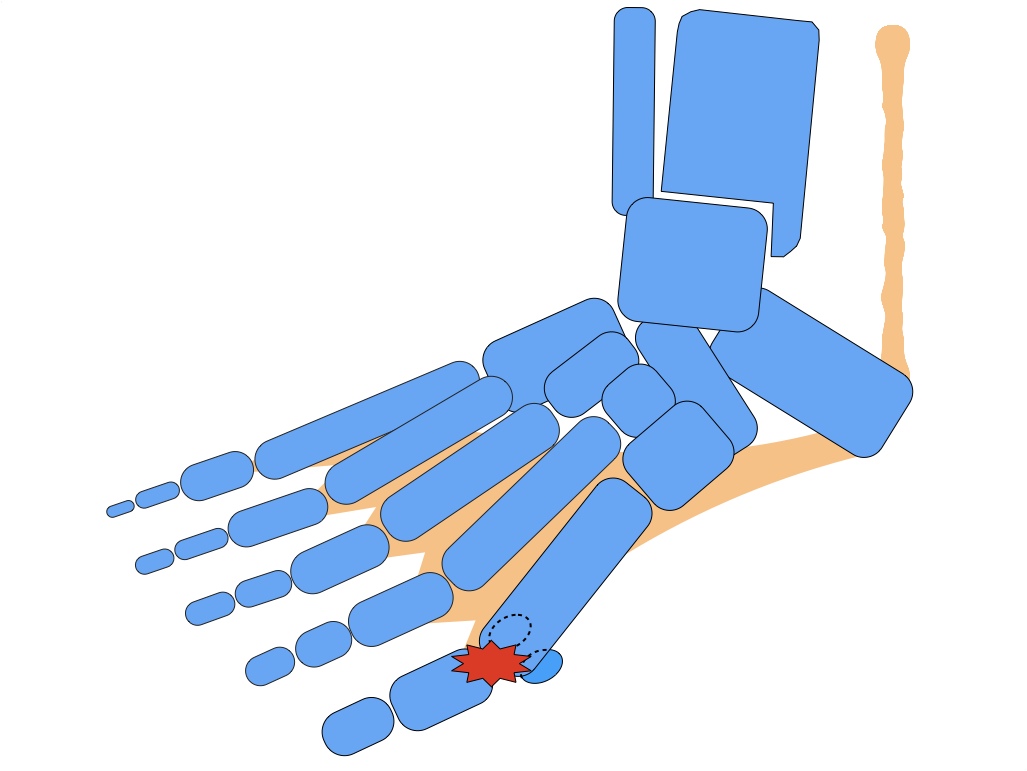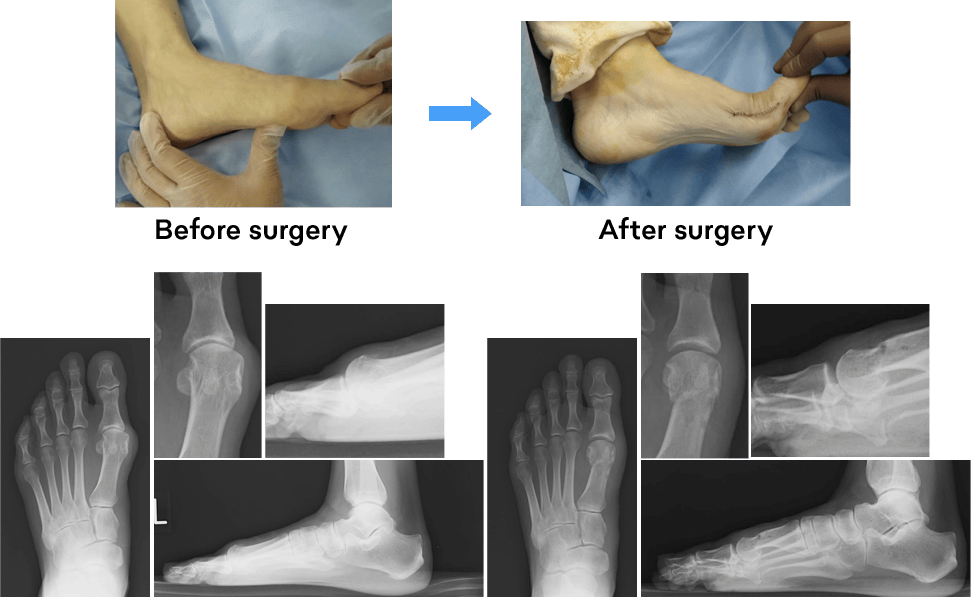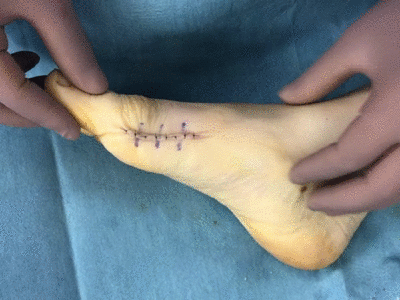Treatable ConditionsSupervised by Foot Clinic Omotesando
Hallux Rigidus
“Sudden pain at the base of the big toe”—this is often mistaken for gout based on symptoms alone. Hallux rigidus is caused by skeletal deformities or misalignment of the foot (including genetic factors or other medical conditions), similar to bunions.
Unlike bunions, which cause a visible deformity without damaging the inside of the joint, hallux rigidus involves significant internal joint damage with minimal external deformity. If the condition worsens, the inflamed joint may eventually become severely damaged, leading to a complete loss of mobility in the big toe.
In mild cases, the basic treatment is the same as for bunions—correcting the overall foot structure with medical insoles (orthotics) and gait training.
For severe cases where the big toe cannot move, joint-preserving reconstructive surgery is performed.
This surgery not only restores the toe’s mobility but also redirects pressure within the joint to correct the load-bearing mechanics, preventing further damage.
Since it is uncommon for both sides to become severe simultaneously, the procedure is typically done on one foot at a time, allowing for a quick recovery. As with bunion surgery, the implants used are bio-absorbable, so no secondary surgery is needed to remove them.
-

Surgery for Hallux Rigidus
-

Before Surgery
-

After Surgery
Treatable Conditions Supervised by Omotesando Foot Clinic
- Joint Pain & Deformities
- Bunion (Hallux Valgus)
- Hallux Rigidus
- Hammer Toe / Claw Toe / Mallet Toe
- Gout Attack
- Lisfranc Joint Disorder
- Rheumatoid Arthritis
- Osteoarthritis of the Ankle
- Toenail Disorders
- Ingrown Toenail (Onychocryptosis)
- Thickened Toenail (Onychauxis)
- Double Toenail
- Toenail Fungal Infection (Onychomycosis)
- Muscle, Tendon, and Ligament Pain
- Plantar Fasciitis
- Achilles Enthesopathy
- Peroneal Tendon Subluxation
- Posterior Tibial Tendon Dysfunction
- Flexor Hallucis Longus Tendinitis
- Bone-Related Pain
- Sesamoiditis (Pain in the Big Toe)
- Metatarsal Head Pain
- Os Trigonum Syndrome
- Accessory Navicular Syndrome
- Osteochondrosis (Sever’s Disease etc.)
- Sinus Tarsi Syndrome
- Stress Fracture
- Foot Numbness
- Morton's Neuroma
- Tarsal Tunnel Syndrome
- Diabetic Peripheral Neuropathy
- Foot Lumps & Lesions
- Corns / Calluses / Warts
- Subungual Exostosis
- Glomus Tumor
- Plantar Fibromatosis
- Ganglion Cyst
- Epidermoid Cyst (Atheroma)
- Sports & Foot Health
- Causes of Pain (Threshold Changes)
- Pes Anserine Bursitis (Inner Knee Pain)
- Iliotibial Band Syndrome (Outer Knee Pain)
- Shin Splints
- Ankle Sprain (Lateral Ligament Injury)
- Lisfranc Ligament Injury
- Common Pediatric Foot Conditions
- The Arch as the Foundation of Growth
![Foot Clinic OMOTESANDO [Ashi no Clinic OMOTESANDO]](/img/en/cmn/logo1.svg)




